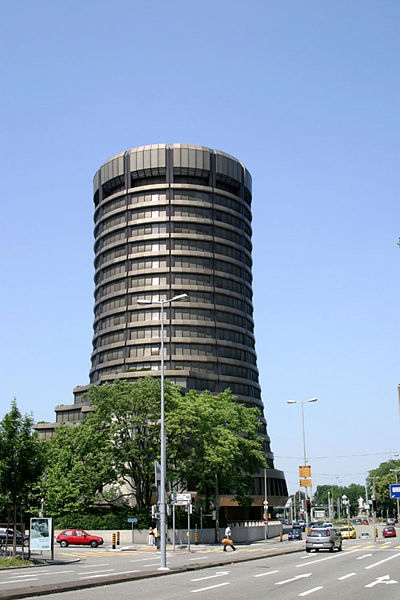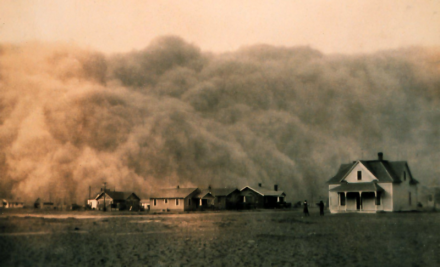 Why is the global economy in so much trouble? How can so many people be so absolutely certain that the world financial system is going to crash? Well, the truth is that when you take a look at the cold, hard numbers it is not difficult to see why the global financial pyramid scheme is destined to fail. In the United States today, there is approximately 56 trillion dollars of total debt in our financial system, but there is only about 9 trillion dollars in our bank accounts. So you could take every single penny out of the banks, multiply it by six, and you still would not have enough money to pay off all of our debts. Overall, there is about 190 trillion dollars of total debt on the planet. But global GDP is only about 70 trillion dollars. And the total notional value of all derivatives around the globe is somewhere between 600 trillion and 1500 trillion dollars. So we have a gigantic problem on our hands. The global financial system is a very shaky house of cards that has been constructed on a foundation of debt, leverage and incredibly risky derivatives. We are living in the greatest financial bubble in world history, and it isn’t going to take much to topple the entire thing. And when it falls, it is going to be the largest financial disaster in the history of the planet.
Why is the global economy in so much trouble? How can so many people be so absolutely certain that the world financial system is going to crash? Well, the truth is that when you take a look at the cold, hard numbers it is not difficult to see why the global financial pyramid scheme is destined to fail. In the United States today, there is approximately 56 trillion dollars of total debt in our financial system, but there is only about 9 trillion dollars in our bank accounts. So you could take every single penny out of the banks, multiply it by six, and you still would not have enough money to pay off all of our debts. Overall, there is about 190 trillion dollars of total debt on the planet. But global GDP is only about 70 trillion dollars. And the total notional value of all derivatives around the globe is somewhere between 600 trillion and 1500 trillion dollars. So we have a gigantic problem on our hands. The global financial system is a very shaky house of cards that has been constructed on a foundation of debt, leverage and incredibly risky derivatives. We are living in the greatest financial bubble in world history, and it isn’t going to take much to topple the entire thing. And when it falls, it is going to be the largest financial disaster in the history of the planet.
The global financial system is more interconnected today than ever before, and a crisis at one major bank or in one area of the world can spread at lightning speed. As I wrote about yesterday, the entire European banking system is leveraged 26 to 1 at this point. A decline in asset values of just 4 percent would totally wipe out the equity of many of those banks, and once a financial panic begins we could potentially see major financial institutions start to go down like dominoes.
We got a small taste of what that is like back in 2008, and it is inevitable that it will happen again.
Anyone that would tell you that the current global financial system is sustainable does not know what they are talking about. Just look at the numbers that I have posted below.
The following is the global financial pyramid scheme by the numbers…
–$9,283,000,000,000 – The total amount of all bank deposits in the United States. The FDIC has just 25 billion dollars in the deposit insurance fund that is supposed to “guarantee” those deposits. In other words, the ratio of total bank deposits to insurance fund money is more than 371 to 1.
–$10,012,800,000,000 – The total amount of mortgage debt in the United States. As you can see, you could take every penny out of every bank account in America and it still would not cover it.
–$10,409,500,000,000 – The M2 money supply in the United States. This is probably the most commonly used measure of the total amount of money in the U.S. economy.
–$15,094,000,000,000 – U.S. GDP. It is a measure of all economic activity in the United States for a single year.
–$16,749,269,587,407.53 – The size of the U.S. national debt. It has grown by more than 10 trillion dollars over the past ten years.
–$32,000,000,000,000 – The total amount of money that the global elite have stashed in offshore banks (that we know about).
–$50,230,844,000,000 – The total amount of government debt in the world.
–$56,280,790,000,000 – The total amount of debt (government, corporate, consumer, etc.) in the U.S. financial system.
–$61,000,000,000,000 – The combined total assets of the 50 largest banks in the world.
–$70,000,000,000,000 – The approximate size of total world GDP.
–$190,000,000,000,000 – The approximate size of the total amount of debt in the entire world. It has nearly doubled in size over the past decade.
–$212,525,587,000,000 – According to the U.S. government, this is the notional value of the derivatives that are being held by the top 25 banks in the United States. But those banks only have total assets of about 8.9 trillion dollars combined. In other words, the exposure of our largest banks to derivatives outweighs their total assets by a ratio of about 24 to 1.
–$600,000,000,000,000 to $1,500,000,000,000,000 – The estimates of the total notional value of all global derivatives generally fall within this range. At the high end of the range, the ratio of derivatives to global GDP is more than 21 to 1.
Are you starting to get the picture?
Every single day, the total amount of debt will continue to grow faster than the total amount of money until the day that this bubble bursts.
What we witnessed back in 2008 was just a little “hiccup” in the system. It caused the worst economic downturn since the Great Depression, but global financial authorities were able to get things stabilized.
Next time it won’t be so easy.
The next wave of the economic collapse is quickly approaching. A full-blown economic depression has already started in southern Europe. Unemployment is at record highs and economic activity is contracting rapidly.
The major offshore banking centers in Cyprus are on the verge of collapsing. It was just announced that they will now be closed until Tuesday, but nobody really knows for sure when they will be allowed to reopen. And there is already talk that when they do reopen that there will be strict limits on how much money people can take out.
And now the IMF is warning that the three biggest banks in Slovenia are failing and that a billion euros will be needed to bail them out.
The dominoes are starting to tumble, and the United States won’t be immune. In fact, the greatest financial problems that the United States has ever seen are on the horizon.
But you can just have faith that Ben Bernanke, Barack Obama and the U.S. Congress know exactly what they are doing and will be able to save us from the coming financial collapse if you want.
The mainstream media will provide you with all of the positive economic news that you could possibly want. They are giddy about the fact that the Dow keeps hitting all-time highs and they would have us all believe that we are in the midst of a robust economic recovery. You can listen to them if you want to.
But when you are tempted to believe that everything is going to be “okay” somehow, just go back and look at the numbers there were posted above one more time.
There is no way that the global financial pyramid scheme is going to be able to hold up for too much longer. At some point it is going to totally collapse. When that happens, will you be ready?














